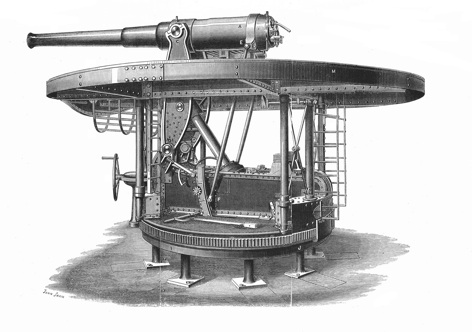Residents of Bow and other London addresses were recently informed that surface-to-air missiles could be stationed on their rooftops as part of the ‘Olympic ring of steel’ defences for the forthcoming Games.
Clearly security is paramount at this unique event, but we can’t help thinking there must be more discreet, sophisticated methods from one of the world’s biggest arms spenders.


Something perhaps like a defence battery buried underground that can aim while hidden, quickly pop up from its dug-out, despatch its target, then retreat again.
Surprisingly, such a thing featured in the pages of The Engineer magazine in May 1891.
The article reports on a naval exhibition that featured a hydropneumatic mounting for guns upwards of five tonnes for the purposes of coastal defence against hostile foreign fleets.
The gun and crew are all given most perfect protection from fire
‘The gun with its mounting, and the crew required to work it, are all given most perfect protection from an enemy’s fire, on account of their being in a pit,’ the article reads.
‘If properly arranged, it should be impossible for the attacking ships to be able to discern its position with sufficient certainty to enable them to commence an attack.
‘As soon as it becomes convenient to fire at the ship, the loaded gun is allowed to rise above the pit, which it does automatically by means of the air that has been compressed in the cylinder by the recoil of the gun after the previous round.
‘Having been already aimed in the pit by reflecting mirrors, only a moment is required to make any necessary final adjustments of alignment and to fire the gun, which under the influence of recoil immediately descends again into its pit, leaving even with black powder only a puff of smoke to direct the return fire from the ship.’




Poll: Should the UK’s railways be renationalised?
Rail passenger numbers declined from 1.27 million in 1946 to 735,000 in 1994 a fall of 42% over 49 years. In 2019 the last pre-Covid year the number...